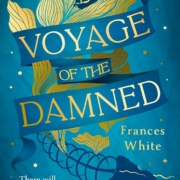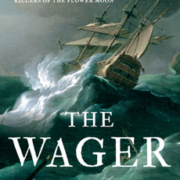Trust by Hernan Diaz
How vast individual wealth is amassed often hits its mark in biographies. We know the usual suspects: Carnegie, Rockefeller, Jobs. Within each is a story of a commodity or a manufactured good, something tangible for the mind’s eye. Concentrated wealth by way of finance capital is a more nebulous biographic endeavor. Rarer still are novelizations about finance capitalists.
If such a novel sounds beyond dull and has you mentally placing it back on the shelf, then this year’s co-winner of the Pulitzer Prize for Fiction should have you reconsidering. I’ll take it even further: If there’s one novel I would recommend, here and now, it would be Trust by Hernan Diaz, the aforementioned winner. It’s a brilliant work told in four parts, each with a different narrator. As such, it’s tempting to label all narrators as unreliable. Fair enough, yet some narratives appear truer than others, with each casting doubt on what you think you’ve already learned. Throughout, the reader is putting together an intriguing narrative puzzle: Who are Benjamin and Helen Rask?
The novel begins with a novella that reads like a biography that’s essentially free of dialogue. Written by a man named Harold Vanner, he pens as his first sentence: “Because he had enjoyed every advantage since birth, one of the few privileges denied Benjamin Rask was that of a heroic rise.” Bookish and solitary, a young Rask enters the 20th century with “no appetites to repress.” When his father dies during his senior year of high school, “relatives and acquaintances alike were impressed by Benjamin’s composure, but the truth was that mourning simply had given the natural dispositions of this character a socially recognizable form.”
To say that he’s without appetite is somewhat of a misnomer. True, the tobacco business that yields great generational wealth within the Rask family bores him. Using that wealth to buy and sell securities decidedly does not bore him. In fact, as he moves through early adulthood, the New York financial community is awed by his ability to capitalize on the market.
But Rask has a problem. His localized fame works against his need for solitude. Continuing his monastic life carries the risk of being labeled, understatedly, “a character.” Rask is cognizant enough to know “there was nothing more conspicuous than anonymity.” He finds the remedy in Helen Brevoort, his future wife. It’s more than a marriage of convenience. They both share ravenous intellectual curiosities. Helen, too, craves a life of the mind. Yet she’s more adroit in crafting their image, understanding that “privacy requires a public facade.” She and Benjamin host numerous gatherings at their New York City mansion, notably chamber orchestra performances.
Throughout their marriage, the Rask fortune grows to levels that leave other financiers wondering exactly how this was achieved. Helen, in turn, uses this wealth to become the nation’s leading benefactor of the arts. Then comes the stock market crash of 1929.
Rather than being ruined, the Rasks inexplicably profit from the crash. They are vilified in the newspapers, Benjamin accused of orchestrating the calamity for personal gain. The Rasks become social pariahs before a brutal illness takes Helen’s life. In the end, despite their lavish parties, no one can say that they really knew the Rasks.
The novel’s second narrator is a financier who worked during the time in question. The novel’s third narrator is Ida Partenza, a woman who’s recalling—many decades later—her employment by the second narrator. And the final narrator’s diary entries completely change the novel’s tone, revealing and answering much. To expound on these narrations here would steal some of the novel’s thunder.
I say “some” because even if someone had disclosed what was to come, I would have devoured the novel nonetheless. Diaz’s writing is exquisite. He captures the voices of the learned, ranging from securities traders to cultural elites. He can also jettison any high-mindedness and share the musings of someone—regardless of socioeconomic class—who’s nearing the great equalizer: death. “Is the strawberry in my mouth alive? Or is its flesh, speckled with the unborn, already dead?”
Partenza’s narration also reveals a life outside the rarefied air of the wealthy. She and her Italian immigrant father are barely surviving the Great Depression in their Brooklyn apartment. It doesn’t help that her father is a self-styled anarchist who detests the very concept of money, a quasi-Marxist who can’t stand the Marxists in power. Still, he and the financier who employs Ida have something in common. They both see the economic depression as a corrective, but for vastly different reasons.
Ida loves her father and doesn’t necessarily disagree with some of his views; yet she finds his dogma insufferable, bordering on fascistic. She can’t help but take some pleasure in knowing that her father must accept that her income comes from a finance capitalist, money that keeps them housed. This period of her long life is short, but a certain person and event within it will also become the standard by which she will forever “measure hatred.”
The stories within Trust surround how paper capital begets more paper capital. But it’s also a story about how views on money bleed into all interactions, whether someone realizes it or not. It’s a story about how reality can be made to fit mistakes, about the “bizarre sort of violence in having…memories plagiarized.” Some of life’s narratives are born of deceit, becoming earnestly told and believed with each retelling.
Reviewed by Jason Sullivan











